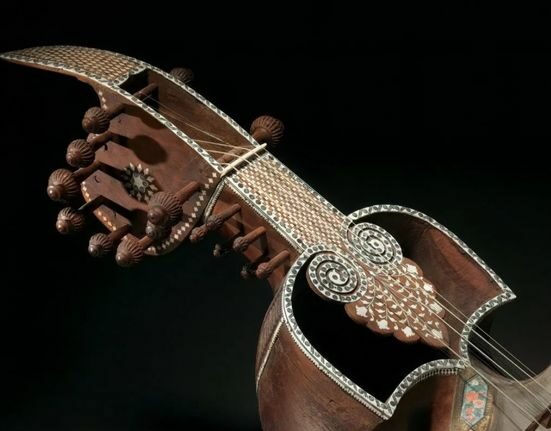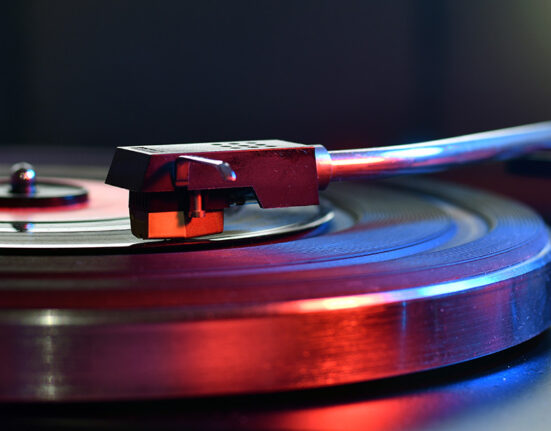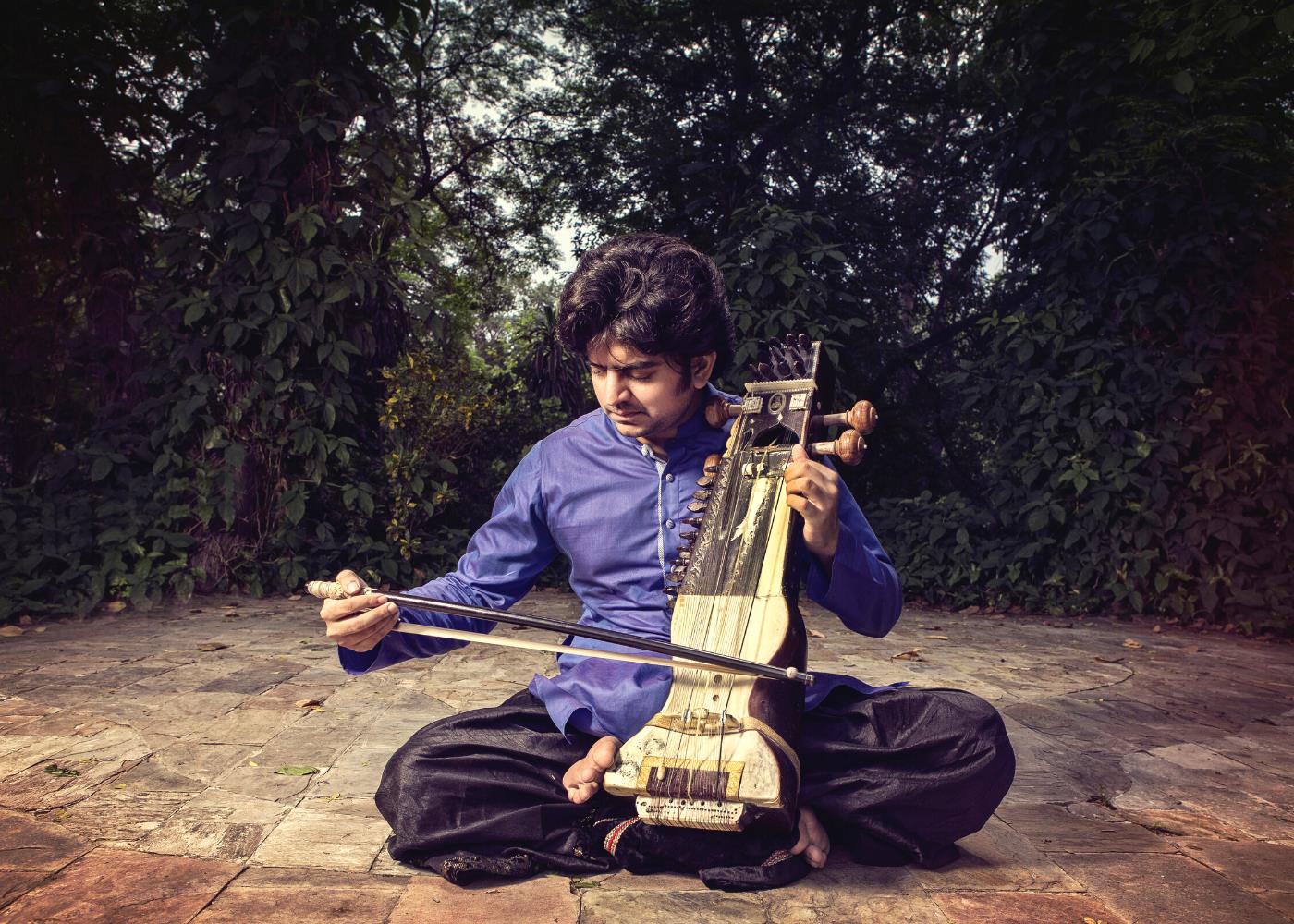Sarangi is the most vital bowed string instrument of South Asian art music. Also traditionally called ‘Sau-Rangi’ meaning ‘a hundred colours’ the instrument displays its adaptability to a wide range of styles, its flexible pitch and tonal quality. Instruments like Sarangi, Esraj, Taus and Dilruba are among the only instruments that come in close proximity to the human voice. Many forms of this are in vogue in various regions of our country, but ironically, its place and time of origin have not been established as yet. Here’s everything that you wanted to know about this beautiful instrument, the Sarangi. Let’s take a closer look.
Phalguni Gupta | BeatCurry Team
THE INSTRUMENT
When it comes to the structure, this instrument is carved out of a single piece of hardwood, usually ‘Tun’ (sometimes called Indian Cedar) and usually 64 or 67 cm in length. Usually made of gut, it has three melody strings and around thirty-five metal sympathetic strings (tarab) which provides a bright echo. An elephant-shaped bridge (jawari) is usually made of ivory or bone, through and over the strings pass.
Further to protect the instrument’s goatskin face it rests on a leather strap. Held with an underhand grip, the bow (gaj) is usually made of ebony or rosewood and is considerably heavier than the violin or their cello bows, contributing to the solidity and vocal quality of the Sarangi’s sound. It is held vertically, neck uppermost, and the strings are stopped with the cuticles or the upper nails or the skin above the nails of the left hand. The left hand fingers note the strings. A peculiar style emerges through the ‘fingering’ technique. Talcum powder is used on their palms to facilitate the gliding of the hand up and down the neck for reproducing melodious meends, gamaks, khatkaas and other expressions in music. Traditionally, they have been passed and so most players play instruments between fifty and a hundred years old, often inherited from their elders.
THE HISTORY
Coming from the Indian subcontinent, the Sarangi was mainly seen in Punjabi and Rajasthani folk/sufi music and in parts of Assam. Even though the Sarangi has all the characters of a great instrument, it certainly has been making a space for itself in the classical music scene. Earlier, one of the reasons why it could not acquire a respectable place among classical instruments lies in its history and social factors. Many Sarangi players were associated with dancing girls from the lower strata. From the point of view of many, the instrument carried the stigma for its association with the courtesan tradition.
In recorded history, during the days of Emperor Akbar’s rule, the Sarangi finds its first mention in Abu-ul-Fazal’s Ain-i-Akbari (16 A.D), where there’s a reference to Sarangi as part of the court ensemble. Throughout, 18th to the early 20th century, the players were associated with the saloons of Tawaifs as accompanists, the main attraction of the performances were the dancers or the singers accompanied by the Sarangi player, no matter how accomplished musicians they were, there always remained a social hierarchy. There are even stories of the Sarangi being seen and accepted as an Indian classical instrument during the time of Mohammed Shah Rangile, and by the 19th century was associated with the performances of courtesans. As time passed, the instrument started taking greater leaps in the Indian Classical music scene.
WHAT SETS IT APART
Also called ‘Saran’, this is the only instrument that can produce almost all the nuances of vocal music of any style, be it dhrupad, khayal, thumri or bhajan or even ghazal, with exact intonations. That is the reason why this instrument has always remained in close association with vocal music, and thus have always been preferred by vocalists as an able accompaniment.
Besides spending a lifetime mastering the instrument, Sarangi artists also have to learn, observe and minutely understand the ‘Gayaki Ang‘ of every artist whom they accompany. Gayaki Ang is the ability to reproduce the precise nuances of the human vocal chords on that instrument. Every style, artist, Gharana, Khandaan (lineage) has its own Gayaki Ang, an aesthetically distinctive vocal intonation that maestros are known for, a skill Sarangi players attain with dedicated training.
What’s also unique about this instrument is the fact that Sarangi players have always been trained in classical music to the extent that some of them have been the ustads of famous vocalists. Some of the most famous vocalists like Abdul Karim Khan who belonged to Kirana Gharana, Bade Ghulam Ali Khan from Patiala Gharana and Amir Khan of our times were initially trained in playing the Sarangi and later on took to vocal music.
KNOW THE LEGENDS
At BeatCurry, we respect and salute the legends who have carried forward the Sarangi, the pioneers who’ve kept this instrument and it’s traditions alive, and at the same time propagated and inspired generations of students and players from around the world. It’s thus our sincerest intent to mention a few words about them.
One of the greatest pioneers of Sarangi, a name synonymous with the instrument is the musical genius Pandit Ram Narayan from Udaipur, Rajasthan, known for his pristine intonation, lightning fast approach towards taans and importantly, his thoughts and vision for the Sarangi. His daughter Aruna Narayan Kalle, a noted Sarangi player, happens to be among the artists to have given Sarangi an independent position in the music scene. She also happens to be the first female Sarangi player in today’s time.
Among the gems from the Sikar Gharana was the multi-versatile Sarangi player and singer, the Late Padma Bhushan awardee Ustad Sultan Khan from Jodhpur, Rajasthan, son of Ustad Gulab Khan.
The legendary Sarangi player from the Sainia Gharana that dates back it’s roots to Mian Tansen, was the Padma Bhushan awardee, the Late Ustad Sabri Khan from Moradabad, Uttar Pradesh.
Son of the legendary Tabla virtuoso Pt Nikhil Ghosh and nephew of Pt. Pannalal Ghosh was the legendary Sarangi artist from Mumbai, the Late Maestro Dhruba Ghosh known for his immense contribution towards presenting the Sarangi in a new vision and light.
Son of Ustad Mehboob Khan is the legendary Sarangi player, Padma Shri Ustad Moinuddin Khan from the Jaipur Gharana, who’s worked with the AIR Jaipur and has presented his music in various films. Shri Momin Khan, Suhail Yusuf Khan and Vanraj Shastri are among the young prodigious names in the music scene.
A renowned new age exponent of the Sarangi is Maestro Dilshad Khan originally from Kolkata, who was trained under the musical guidance of N.C. Chakravorty, Hidan Banarjee and Gyan Prakash Ghosh. After moving permanently to Mumbai, Khan became a disciple of Kirana gharana vocalist Padmashree Faiyaz Ahmed Khan.
From a time when music spoke more directly to people and music’s emotion was valued more highly than its technical perfection, the Sarangi has come a long way. Being one of the most authentic and versatile instruments that has evolved on Indian soil, it is something to be preserved for generations where the hope lies on the younger performers of today.
If you’d like to know more about the unique and versatile forms and flavours of music,
Log on to www.beatcurry.com, subscribe and never miss another update from us.







